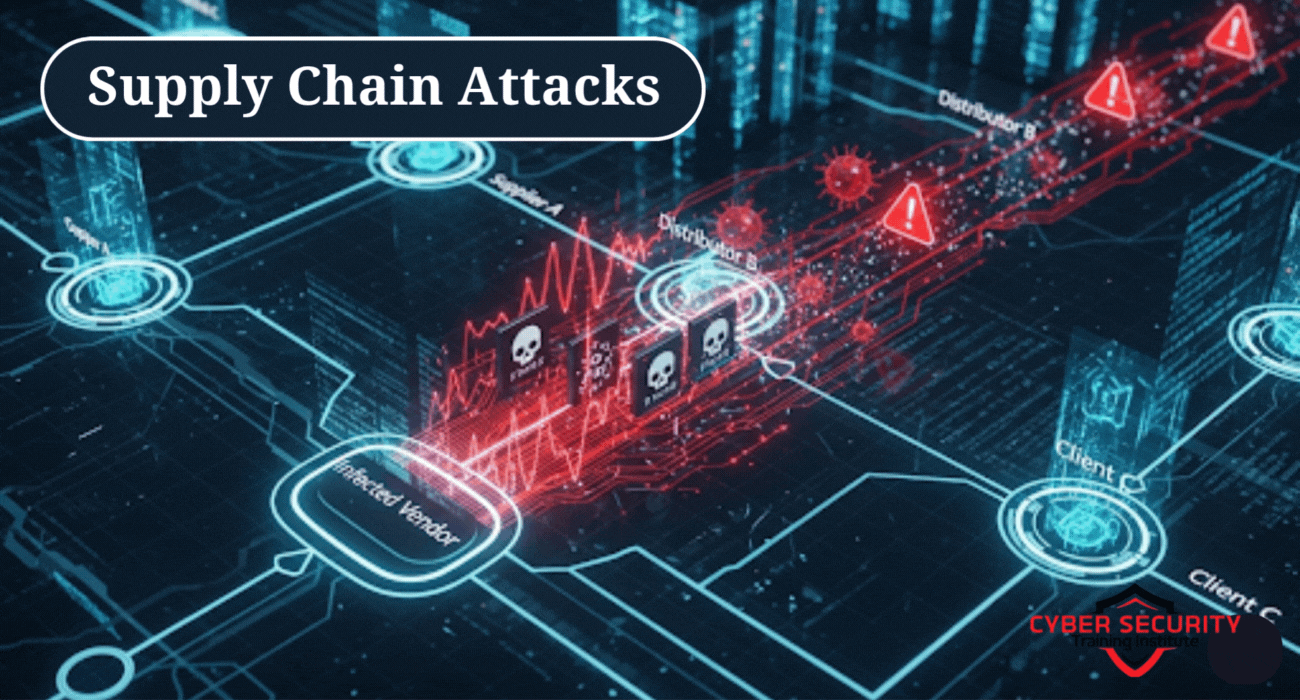How Hackers Could Target Space Agencies | Lessons from Recent Incidents
In an era where space exploration is advancing at an unprecedented pace, the digital infrastructure of space agencies has become a prime target for hackers. From satellite communications to mission control systems, the stakes are higher than ever. A single breach could disrupt critical missions, compromise sensitive data, or even jeopardize national security. Recent incidents have shown that no organization, not even NASA or the European Space Agency (ESA), is immune to cyberattacks. This blog explores how hackers target space agencies, the vulnerabilities they exploit, and the lessons we can learn to prevent future attacks. Space agencies manage some of the most advanced technologies on (and off) Earth, but their interconnected systems create opportunities for cybercriminals. By examining recent incidents and their implications, we’ll uncover the methods hackers use and what space agencies can do to stay one step ahead. Whether you’re a tech enthusiast or just curious about cybersecurity, this post will break it down in simple terms.

Table of Contents
- Why Space Agencies Are Attractive Targets
- Common Methods Hackers Use
- Recent Incidents: What Happened?
- Lessons Learned and How to Strengthen Defenses
- The Future of Cybersecurity in Space
- Conclusion
- Frequently Asked Questions
Why Space Agencies Are Attractive Targets
Space agencies like NASA, ESA, and others handle sensitive information and critical infrastructure, making them high-value targets for hackers. Here’s why:
- Sensitive Data: Agencies store classified information about space missions, satellite technology, and scientific discoveries. This data is valuable to nation-states, competitors, or even black-market buyers.
- Critical Infrastructure: Systems controlling satellites, rovers, or space stations are mission-critical. Disrupting them could cause significant financial and operational damage.
- Geopolitical Motives: State-sponsored hackers may target space agencies to gain strategic advantages or disrupt rival nations’ space programs.
- Complex Supply Chains: Space agencies rely on contractors and partners, creating multiple entry points for attackers.
The combination of high stakes and complex systems makes space agencies a magnet for cybercriminals, ranging from lone hackers to sophisticated groups.
Common Methods Hackers Use
Hackers use a variety of techniques to breach space agencies’ systems. Below are some of the most common methods, explained in simple terms:
- Phishing Attacks: Hackers send fake emails or messages that trick employees into sharing login credentials or clicking malicious links. For example, an email might look like it’s from a trusted colleague but contains a link that installs malware.
- Malware: Malicious software, like viruses or ransomware, can infiltrate systems to steal data or lock users out until a ransom is paid.
- Exploiting Software Vulnerabilities: Hackers find weaknesses in outdated software or unpatched systems to gain unauthorized access.
- Social Engineering: This involves manipulating people into giving up sensitive information, such as pretending to be a technician needing access to a system.
- Supply Chain Attacks: Hackers target third-party vendors or contractors with weaker security to gain access to the agency’s systems.
These methods exploit both technical weaknesses and human error, making them effective against even the most secure organizations.
Recent Incidents: What Happened?
Several high-profile incidents have highlighted the vulnerabilities of space agencies. Below is a table summarizing some notable cases:
| Incident | Agency | Year | Method | Impact |
|---|---|---|---|---|
| NASA JPL Breach | NASA | 2018 | Unauthorized Raspberry Pi device | Access to sensitive mission data; 500MB of data stolen |
| ESA Data Leak | ESA | 2019 | Phishing attack | Exposure of employee and contractor details |
| ISRO Malware Attack | ISRO | 2019 | Malware (Dtrack) | Potential compromise of mission systems |
These incidents reveal how even small oversights, like an unauthorized device or a single phishing email, can lead to significant breaches. For instance, in the NASA JPL case, a Raspberry Pi (a small, inexpensive computer) connected to the network without permission gave hackers a backdoor to steal data. These examples underscore the need for robust cybersecurity measures.
Lessons Learned and How to Strengthen Defenses
The incidents above offer valuable lessons for space agencies and other organizations. Here are key takeaways and strategies to bolster defenses:
- Employee Training: Regular training on recognizing phishing emails and social engineering tactics can reduce human error. Employees should know how to spot suspicious links or requests.
- Network Segmentation: Dividing networks into smaller, isolated segments limits the damage if one part is breached. For example, mission-critical systems should be separate from employee email servers.
- Patch Management: Keeping software and systems updated closes vulnerabilities that hackers exploit.
- Zero Trust Architecture: Assume no user or device is trustworthy until verified. This approach requires constant authentication, even for internal users.
- Third-Party Oversight: Vendors and contractors must follow the same security standards as the agency itself to prevent supply chain attacks.
Implementing these measures requires investment, but the cost of a breach—both financial and reputational—is far higher.
The Future of Cybersecurity in Space
As space exploration expands, so do the cybersecurity challenges. The rise of private space companies, international collaborations, and new technologies like quantum communication will introduce new risks. For example, satellites increasingly rely on cloud-based systems, which could be targeted by hackers. Additionally, the growing use of artificial intelligence in space missions could be exploited if not properly secured.
To stay ahead, space agencies must adopt proactive measures, such as:
- AI-Powered Threat Detection: Using AI to monitor systems for unusual activity in real-time.
- Quantum Cryptography: Exploring quantum-based encryption to secure communications between Earth and space assets.
- Global Cooperation: Sharing threat intelligence with other agencies and private companies to combat global cyber threats.
The future of space exploration depends on securing the digital frontier as much as the physical one.
Conclusion
Space agencies are at the forefront of human achievement, but their reliance on complex, interconnected systems makes them vulnerable to cyberattacks. From phishing emails to supply chain attacks, hackers use a range of methods to exploit weaknesses. Recent incidents, like the NASA JPL breach and ESA data leak, highlight the real-world consequences of these threats. By learning from these events and implementing stronger defenses—such as employee training, network segmentation, and zero trust policies—agencies can protect their missions and data. As space exploration evolves, so must cybersecurity, ensuring that the final frontier remains secure for future generations.
Frequently Asked Questions
Why do hackers target space agencies?
Space agencies hold sensitive data, control critical infrastructure, and are geopolitically significant, making them attractive targets for hackers seeking data, disruption, or strategic advantages.
What kind of data do space agencies have that hackers want?
Hackers may target classified mission details, satellite technology specs, scientific research, or personal data of employees and contractors.
What is a phishing attack?
A phishing attack involves fake emails or messages that trick users into sharing login credentials or clicking malicious links that install malware.
How did hackers breach NASA’s JPL in 2018?
Hackers gained access through an unauthorized Raspberry Pi device connected to the network, allowing them to steal 500MB of sensitive mission data.
What is malware, and how does it affect space agencies?
Malware is malicious software that can steal data, disrupt systems, or lock users out. For space agencies, it could compromise mission control or satellite operations.
What is a supply chain attack?
A supply chain attack targets third-party vendors or contractors with weaker security to gain access to the main organization’s systems.
How can space agencies prevent phishing attacks?
Regular employee training on recognizing suspicious emails and implementing email filters can reduce the risk of phishing attacks.
What is network segmentation?
Network segmentation divides a network into smaller, isolated parts to limit the spread of a breach, protecting critical systems like mission control.
Why is updating software important for cybersecurity?
Updates fix vulnerabilities in software that hackers can exploit. Outdated systems are easier to breach.
What is a zero trust architecture?
Zero trust assumes no user or device is trustworthy until verified, requiring constant authentication to access systems.
Can hackers target satellites directly?
Yes, hackers can target satellite communications or control systems, potentially disrupting operations or intercepting data.
How does social engineering work?
Social engineering manipulates people into revealing sensitive information, like pretending to be a trusted colleague to gain system access.
What role do contractors play in space agency cyberattacks?
Contractors with weaker security can be entry points for hackers, as seen in supply chain attacks targeting third-party vendors.
How can AI help with cybersecurity in space?
AI can monitor systems for unusual activity, detect threats in real-time, and predict potential vulnerabilities.
What is quantum cryptography?
Quantum cryptography uses quantum mechanics to create secure communication channels, potentially protecting space assets from hacking.
Are private space companies also at risk?
Yes, private companies like SpaceX or Blue Origin face similar cyber risks due to their advanced technology and sensitive data.
How do space agencies recover from a cyberattack?
Recovery involves isolating affected systems, removing malware, restoring data from backups, and strengthening defenses to prevent future attacks.
What is the role of global cooperation in space cybersecurity?
Sharing threat intelligence among agencies and companies helps identify and combat cyber threats more effectively.
Can cyberattacks delay space missions?
Yes, breaches can disrupt mission control, delay launches, or compromise data, leading to costly setbacks.
How can beginners learn more about cybersecurity for space?
Start with online courses on cybersecurity basics, follow space agency blogs, and read case studies on recent incidents to understand real-world applications.
What's Your Reaction?
 Like
0
Like
0
 Dislike
0
Dislike
0
 Love
0
Love
0
 Funny
0
Funny
0
 Angry
0
Angry
0
 Sad
0
Sad
0
 Wow
0
Wow
0















